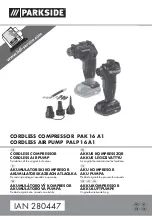
System design recommendations
HP
LP
Condenser
3D flexibility
U Trap
Upper loop
To obtain optimum efficiency of the complete
refrigerant system, optimized R410A heat
exchangers must be used. R410A refrigerant has
good heat transfer properties: it is worthwhile
designing specific heat exchangers to gain in size
and efficiency.
An evaporator with optimized R410A distributor
and circuit will give correct superheat at outlet
and optimal use of the exchange surface. This is
critical for plate evaporators that have generally
a shorter circuit and a lower volume than shell &
tubes and air cooled coils.
For all evaporator types a special care is required
for superheat control leaving the evaporator and
oil return.
A sub-cooler circuit in the condenser that creates
high sub cooling will increase efficiency at high
condensing pressure. In R410A systems the
positive effect of sub cooling on system efficiency
will be significantly larger than in R22/R407C
systems.
Furthermore, for good operation of the
expansion device and to maintain good
efficiency in the evaporator it is important
to have an appropriate sub cooling. Without
adequate sub cooling, flash gas will be formed at
the expansion device resulting in a high degree
of vapour at the expansion device inlet leading to
low efficiency.
Heat exchangers
When the condenser is mounted at a higher
position than the compressor, a suitably sized
«U»-shaped trap close to the compressor is
necessary to prevent oil leaving the compressor
from draining back to the discharge side of the
compressor during off cycle. The upper loop also
helps avoid condensed liquid refrigerant from
draining back to the compressor when stopped.
Discharge lines
Off-cycle migration
Off-cycle refrigerant migration is likely to occur
when the compressor is located at the coldest
part of the installation, when the system uses
a bleed-type expansion device, or if liquid is
allowed to migrate from the evaporator into
the compressor sump by gravity. If too much
liquid refrigerant accumulates in the sump it
will saturate the oil and lead to a flooded start:
when the compressor starts running again, the
refrigerant evaporates abruptly under the sudden
decrease of the bottom shell pressure, causing
the oil to foam. In extreme situations, this might
result in liquid slugging (liquid entering the scroll
elements), which must be avoided as it causes
irreversible damage to the compressor.
Danfoss PSH scroll compressors can tolerate
occasional flooded starts as long as the total
system charge does not exceed the maximum
compressor refrigerant charge.
A suitable test to evaluate the risk of off-cycle
migration is the following:
• Stabilize the non running system at 5°C
ambient temperature,
• Raise the ambient temperature to 20°C and
keep it for 10 minutes,
• Start the compressor and monitor sump
temperature, sight glass indication and sound
level.
The presence of liquid in the crankcase can be
easily detected by checking the sump level
through the oil sight glass. Foam in the oil sump
indicates a flooded start.
A noisy start, oil loss from the sump and sump
cool down are indications for migration.
Depending on the amount of migration graduate
measures shall be taken:
•
Sump heater
•
Liquid line solenoid valve
•
Pump down cycle
22
FRCC.PC.022.A4.02
Application Guidelines
















































